
BMW
I am not a BMW only specialist, but I did already a lot of 4 cyl engines
based on the M10/S14.
This engine is one of the greatest 4 cyl designs ever.
Just the fact that it served the BMW F1 turbo so well, tells everything. It
has the best stock lubrication system I am aware off, is light and very
reliable.
But, even the simpler 2V version is not absolutely a project for your
home garage if you want to exceed 150Hp seriously…
The layout of the combustion chamber needs experience, a skilled hand
and also some serious machining equipment.
if you want to exceed a certain amount of cam lift, the 2 front camshaft
bearings need to be machined to a bigger diameter, also here, no job for
home.
On high end engines the layout specs are getting really tight, like valve
to valve on overlap, valve to piston and even valve to bore and guide
clearance.
Very much the same problems like on NSU engines, all parts need to be
designed within 10th of milimeters.
Even with a seemingly odd and oldfashioned intake runner design, flow
values are pretty good with very low turbulence. This in particular
ensures consistent power all the way up to high revs.
With 125 HP/liter specific power output the engine is not at the limit, but
the valve train is touching its limits over 9000 rpm without titanium parts.
Kugelfischer MFI becomes almost madatory at this point, of course with
a custom camshaft and also a custom actuation cam.
The M10 legend will be topped with the even more famous S14 4V
successor.
I am rather conservative with power output statements about it. There is
too much information and rumor around from back in the all famous
DTM and STW days. Those back then indicated 400 plus HP will never
be measured on my dyno….
Taking into account the hardly availble parts in case of a failure, one
should not eceed 9000 rpm too often. Accepting this as the limiting
factor, 290 HP for the 2,0 version and 330 HP for the 2,5 are reasonable
numbers.
The almost unlimited amount of parts for intake, exhaust and airboxes
are not always providing what they were supposed to be back in the
day. The combination of head design, camshaft choice and those parts,
has to be validated on the dyno to achive good results.
Therefore, dyno tuning is a must to achive results even close to the
ones from the early days.
While blocks are rare, there are now at least aftermarket crankshafts
available. They offer good opportunities for street engines, for both
engine types.
about

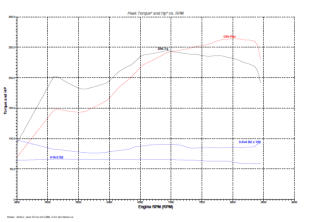
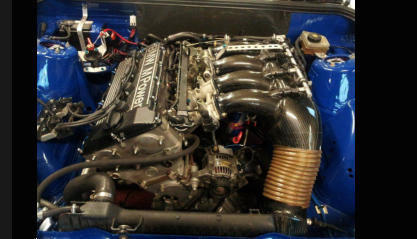

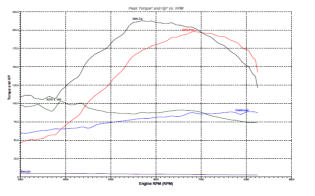
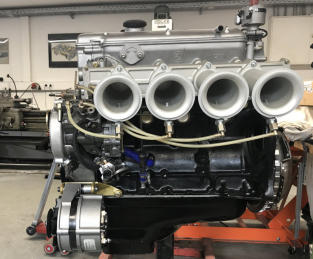
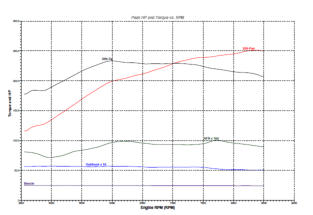
2,0 FIA App. K Standard engine, build with „off the
shelve“ aftermarket parts. 45 DCOE, power 190-200
HP, could be also a street/daily driver engine
depending on intake and exhaust setup
High end engine build, still FIA App K. applicable,
around 250 HP and a smooth torque curve. With MFI
and flat slide throttle
2,0 S14 for German Gr. F specs with (very much
limiting) stock air measuring device










